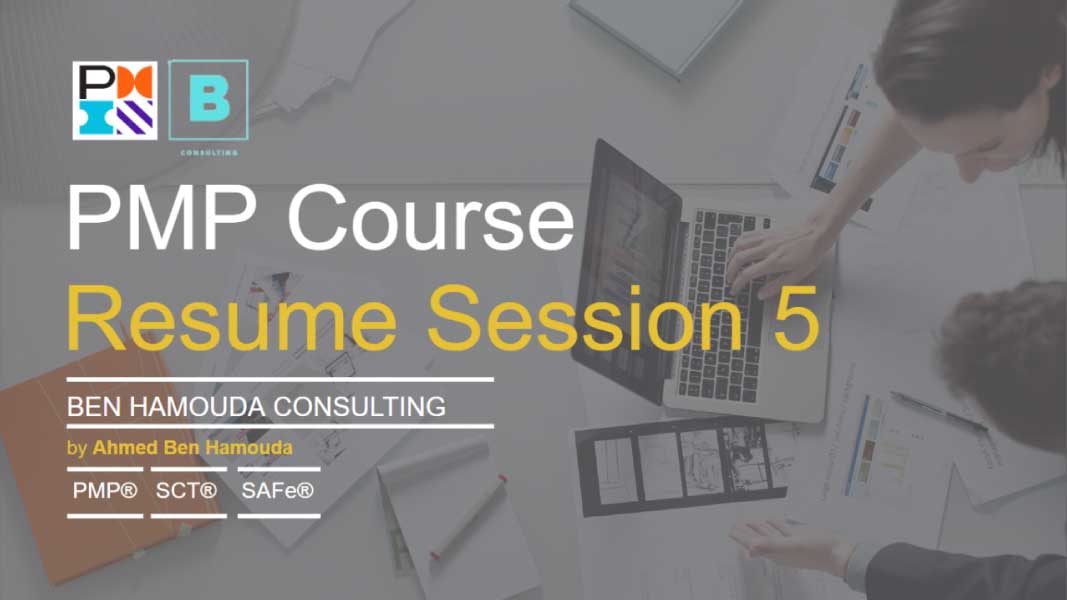
PMP Training: Resume Session 4
10 June 2024
PMP Training: Resume Session 6
2 July 2024After the break of the Eid Adhha, we resumed with the PMP Training and in this session 5 we continued with the Scrum Framework from the Chapter 4 Project Development Approaches.
Initiating Scrum
In the first part of this session, we went through the initiation of the Scrum project which starts by selecting the Product Owner who creates the project vision and collects the approval from the sponsor.
After that, the Scrum Master is assigned and together with the PO they identify the team profiles so that the SM starts the resourcing process. It is important to note here that in the PMP exam the term Project Manager refers usually to the role of the Scrum Master in the Agile project.
In the meantime, The PO collects the requirements from the stakeholders and users using various techniques such as the focus groups, and build the personas to help the project team understand better the profiles of the target users. These requirements are then stored in the project backlog in form of User Stories with their acceptance criterias according to the order of priority and importance. Various prioritization techniques can be used such as the MoSCow method.
After that, the Product Owner defines the release schedule and informs the team to ensure that they are all aligned. The product could have different versions such as MVP, MMP, etc.
The Sprint
We went through the sprint events, their durations, who is responsible for what, the artifacts and how to finish a sprint successfully.
The sprint starts with the planning meeting.. The team will use Story Points to estimate the size of each User Story and create the tasks, and put all that in the Sprint Backlog and commit to it.
Each day the team will have a daily scrum meeting of 15 minutes and each team member will answer 3 questions: what did I do yesterday, what will I do today, and if I have any impediments. The Scrum Master will ensure that the team does not exceed the allotted duration and make sure that the artifacts such as the burn-down chart and impediment log, as well as the kanban-board are updated. After the meeting, the SM works on resolving the impediments.
The team carries out with the tasks according to the Definition of Ready and the SM provides them with the support they need to complete the work properly and according to the plan. In the meanwhile, the PO refines the backlog and prepares the stories that the team will work on during the next sprint.
The Scrum Master will make sure that no changes will take place during the sprint and any requested changes by any stakeholders will have to be taken out of the sprint through discussion involving the PO.
At the end of the sprint, the team will demonstrate their work in the review meeting and the PO will check it against the Definition of Done. The PO will update the product backlog and take decision regarding any unfinished work.
After that, the team and the SM will have a retrospective meeting to discuss what went well, what could be improved, how to improve their velocity, and also will resolve issues and find ways to improve their application of the Scrum framework.
During the session, we had many quizzes to help the participants enhance their knowledge and understand the type of Scrum questions in the PMP exam, and at the end of the session we had Q&A to answer any unclarities.




